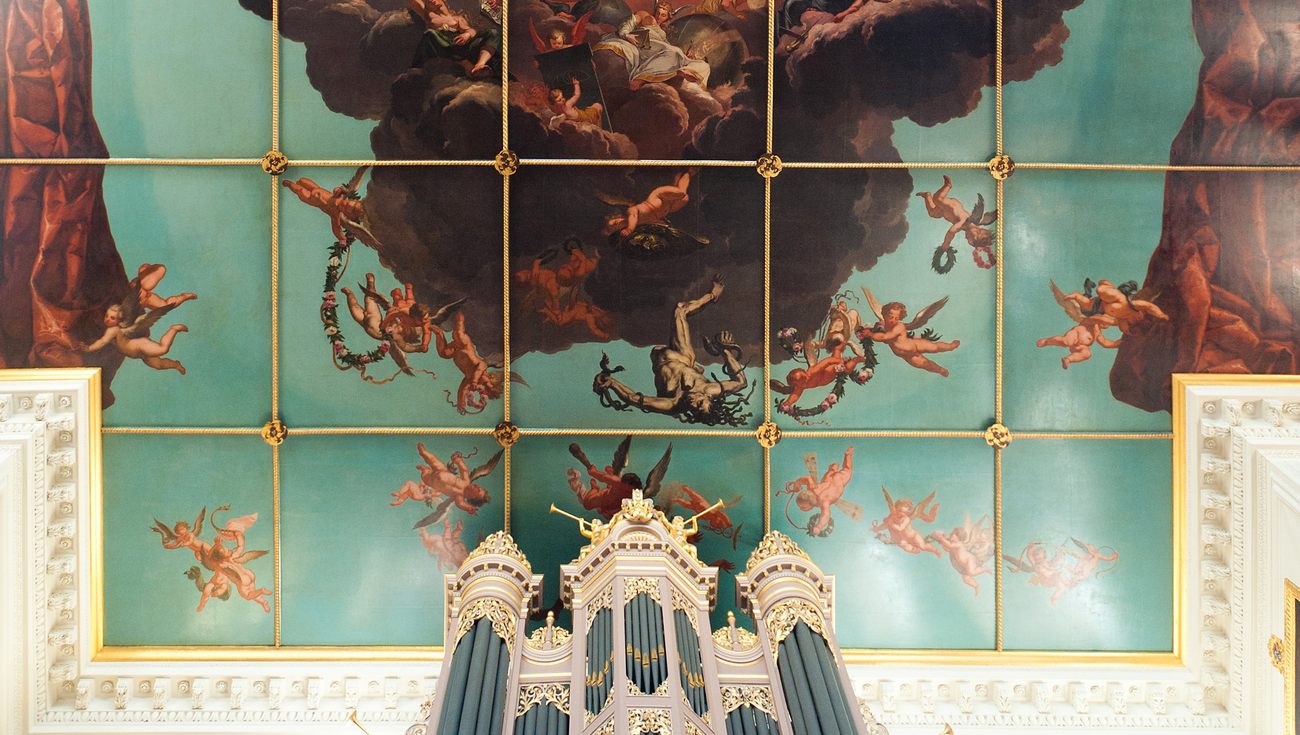Court, Country, City: British Art, 1660-1735 (2009-2012)
AHRC Grant 2009-2012: University of York and Tate Britain

Collaboration: University of York and Tate Britain
Funding: Arts and Humanities Research Council
Duration: three years from October 2009
Principal Investigator: Professor Mark Hallett (Head of Department of the Department of History of Art, University of York)
Co-Investigators: Professor Nigel Llewellyn (Head of Research, Tate) and Dr Martin Myrone (Curator, Tate)
Post-doctoral Research Assistants: Dr Lydia Hamlett, Dr Richard Stephens and Dr Claudine van Hensbergen
Project Administrator: Clare Bond (Centre for Eighteenth Century Studies, University of York)
The Project
The Court, Country, City research project, launched in October 2009, was intended to stimulate new approaches to British visual culture from 1660-1735. The period in question saw profound changes in the nation's character and these included a similarly important period of transformation in the visual arts, beginning with the appointment of Peter Lely as court painter to Charles II and ending with the emergence of the St Martin's Lane Academy in the mid-1730s.
In terms of British art history, the later decades of the eighteenth century - the 'age of Hogarth and Reynolds' - have been relatively well explored; however, the art of the preceding period had not been recovered or interpreted in the same depth. It was in order to redress this art-historical imbalance, and to provide a set of fresh perspectives on the art of late-Stuart and early Georgian Britain, that this project was conceived and developed.
Researchers on the team had a wide range of interests and expertise, which were focused here on three major arenas of the visual arts of the period: the later Stuart and early Hanoverian courts; the country seats of the landed aristocracy; and the urban spaces occupied by a mix of social classes. Important cross-cutting themes included the development of art theory and the impact of imperial expansion on the visual arts. As well as generating a wide range of publications - including books, journal articles, conference papers and PhDs - the project also aimed to communicate the period to a wider audience through gallery displays of art and online resources.
The project was administered by the Centre for Eighteenth Century Studies at the University of York.
Outcomes
The project gave rise to the extensive online database of primary sources, The Art World in Britain, 1660 to 1735. Launched in October 2011, it was edited by Dr Richard Stephens of the project team and developed with the assistance of Dr Paul Young, a software developer from the University of York Digital Library. It was designed to publish primary sources and research tools for the study of arts in Britain between the restoration of Charles II and the opening of Hogarth's St Martin's Lane Academy. Professor Elizabeth Prettejohn (University of York) is chair of the website editorial board.
Events
- Display: 'Dead Standing Things': Still Life 1660-1740 Tate Britain, London: 21 May - 16 September 2012. Focusing on an often overlooked area of British art history, this display examined the origins of still-life painting in Britain. It showcased the work of key artists such as Edward Collier, Pieter van Roestraten and the flower painting of Simon Verelst amongst others. Based on works from the Tate collection, the display also featured loans from other public and private collections.
- A three-day conference, Histories of British Art 1660-1735: Reconstruction and Transformation, was held in York in September 2012 to mark the end of the project and to present its major research findings.
- A one-day conference on current art-historical scholarship in the field, Revisiting British Art , was held at York on May 7 2010.
- A one-day conference, British Art 1660-1735: Close Readings on new approaches to the period was held at Tate Britain on 20 May 2011. The speakers included Professor Anthony Geraghty (University of York), who gave a paper on 'Robert Streeter at the Sheldonian'.
- A temporary gallery display - with the aim of introducing major questions from the research project and relating them to objects in the Tate Collection - was installed at Tate Britain in Autumn 2010, and ran until 10th November 2011.
PhDs
- Dr Caroline Good, '"Lovers of Art", Early English Literature on The Connoisseurship Of Pictures' (2013)
- Dr Peter Moore, 'British Graphic Art 1660-1735: An Atlantic Perspective' (2013)
Main image: Robert Streater, ceiling of the Sheldonian Theatre, Oxford (detail), 1667-69 (©John Cairns Photography)
